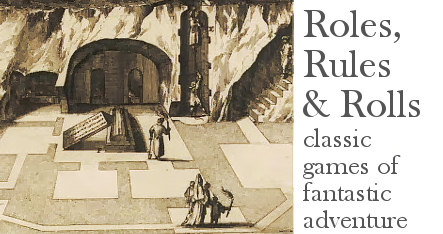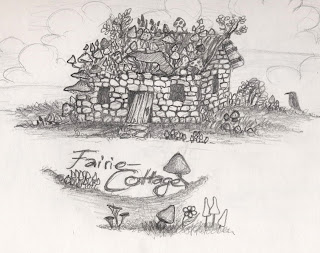The word "preposterawesome" came to mind while watching The Man With The Iron Fists. It also applied to my experiences watching Skyfall and The Hobbit. It is when you are aware that your disbelief is not just suspended, but in freefall without a parachute, but you somehow manage to suppress your x-ty-eight year old brain and enjoy it anyway with your eight-year-old brain.
There are some role-playing games that have it, mostly by Palladium. Whether Synnibar does remains to be seen, but one of my players was a Kickstarter backer and is making noises about GMing it (or rather, taking on the mantle of whatever preposterawesome name Synnibar has for the referee).
When preposterawesome fails it becomes either preposterawful (like
Turkish Star Wars) because even an eight-year-old can see through it, or spuriawesome (like
Sky Captain) because it tries so hard to be awesome but is obviously playing note by note from The Complete Idiot's Guide To Being Awesome, like roleplaying games that dole out Awesome Points!!! or make you roll Just Got Real Dice!!!
Anyway, the shining example of all time is undoubtedly Clark Ashton Smith's epic poem about being a Dungeon Master, "
The Hashish Eater." The medium is "bad poetry" - the nightmare you might have after downing a Milton, Coleridge and Poe milkshake just before going to bed - but he just kills it anyway.
[...] They come,
The Sabaoth of retribution, drawn
From all dread spheres that knew my trespassing,
And led by vengeful fiends and dire alastors
That owned my sway aforetime! [...]
And griffin-mounted gods, and demons throned
On-sable dragons, and the cockodrills
That bear the spleenful pygmies on their backs;
And blue-faced wizards from the worlds of Saiph,
On whom Titanic scorpions fawn; and armies
That move with fronts reverted from the foe,
And strike athwart their shoulders at the shapes
The shields reflect in crystal; and eidola
Fashioned within unfathomable caves
By hands of eyeless peoples; and the blind
Worm-shapen monsters of a sunless world,
With krakens from the ultimate abyss,
And Demogorgons of the outer dark [...]
Demogorgons I can see ... kind of like medusas or
draculas ... but ...
cockodrills?
COCKODRILL
Paternal line: crocodile
Maternal line: hybrid of rooster (m) and mandrill (f)
HD: 5
AC: 3[17]
Damage: d12
Move: 9" (15" in water)
It lurks in a tree or the water and then jumps out and bites. If it gets a tasty morsel on the first bite it runs, but fights if it has no escape. Its hands can fling mud in your face if it has no better mode of ranged attack. With a spleenful pygmy as a rider (halfling with berserker morale), it overcomes its sneaking nature and fights as a fierce war steed.





.jpg)

























